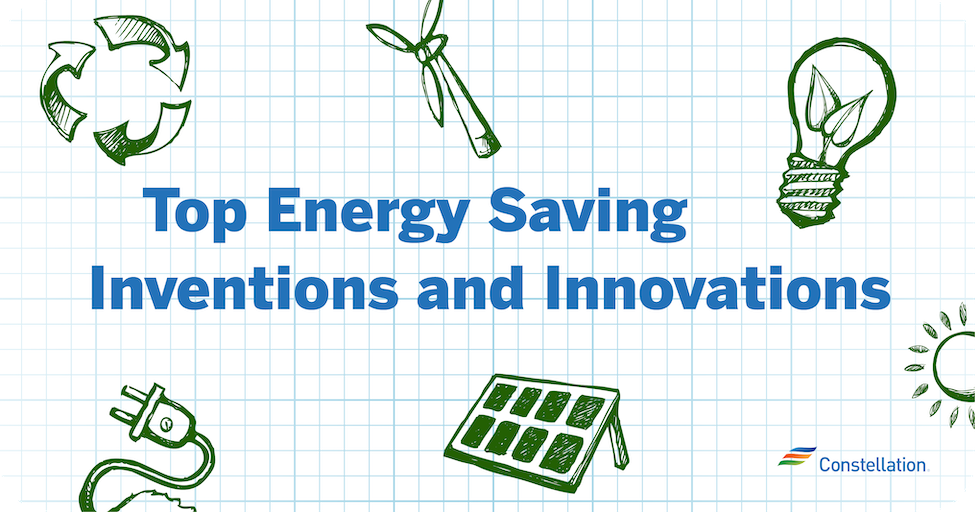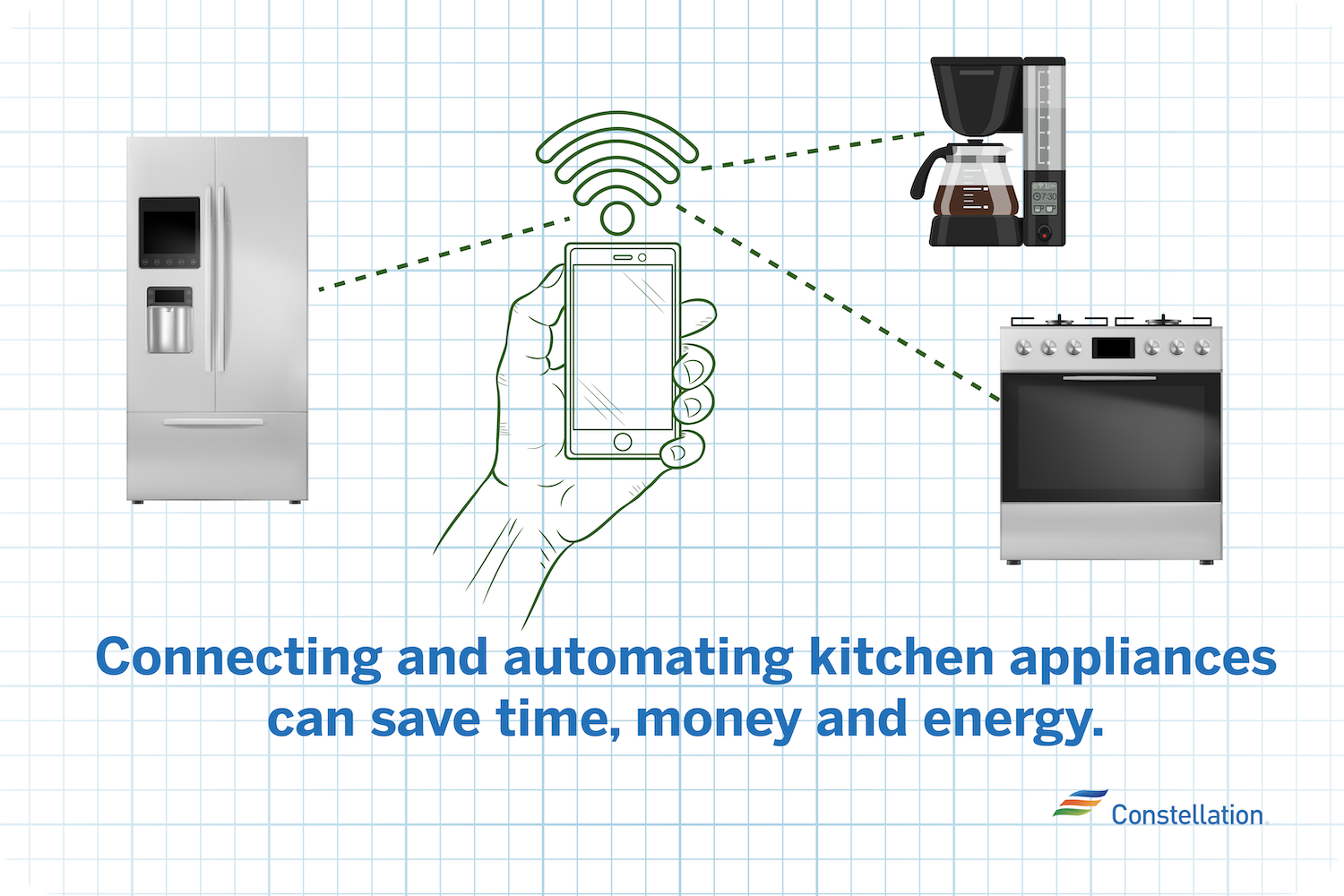
- Category:
Home Energy Savings -
Last updated:
June 30, 2025
Top Energy-Saving Inventions and Innovations in 2025
New energy saving inventions are coming to market more frequently, largely to meet the demand of residential energy users who are increasingly aware of the need to be more efficient. Some are concerned about the environment, others are concerned about cost and some care about both.
Companies are innovating quickly to address these concerns and market new energy-saving technology. Here is an overview of the best technology to reduce energy consumption in your home.
11 of the best energy-saving home technologies
When it comes to new energy-saving innovations, your options can be overwhelming. Which ones are worth it and which ones are more hype than value? Here is our list of energy-saving devices that are worth considering in 2025.
1. Smart home energy monitors
Ideal for tracking and controlling your energy usage, smart home energy monitors offer both energy savings and convenience. Connect every energy-using device in your home virtually to automate and optimize them. Schedule your HVAC to power down to low during the day when you’re at work, then crank it back up just before you return. Set your dishwasher to run at night when energy is cheaper. Program your television to turn off when it’s been idle for a certain time.
Smart home energy-saving strategies include automating and customizing the operation of your devices for efficiency, convenience and comfort.
For example, devices that are compatible with Matter 1.3—the latest standard for smart home connectivity—can now display real-time data from any brand of devices. SmartThings can connect to Apple Home and Home Assistant branded devices. It makes it easy to track usage in kilowatt hours or voltage, along with energy costs, across everything in your smart home system.
2. Internet-connected appliances

Connecting and automating kitchen appliances can save time, money and energy. Today’s smart kitchen gadgets connect to your home automation system for convenience and savings. You can command your coffee maker to be ready with a hot beverage when you wake up. Or preheat your oven on the way home from work so it’s ready for making dinner. You can optimize your refrigerator and freezer temperatures to minimize energy use.
Many ENERGY STAR® appliances are now “demand-response ready,” letting utilities throttle usage during grid peaks in exchange for bill credits.
Cooking and refrigeration make up roughly 9% of energy use in a home, which means internet-connected kitchen appliances can trim overall usage. When it comes to saving energy, all the little things add up.
3. LED lights
The humble light bulb is an area where energy saving innovations have had a massive effect. LED vs. CFL bulbs differ in technology: CFLs excite a gas-filled tube,
while LEDs produce light from semiconductors. LED lights use 85% less energy and last 25 times longer than traditional CFL bulbs.
According to the Department of Energy, by 2035, 84% of all lighting will be LEDs, saving over 569 terrawatt-hours (TWh) per year. This is equal to the energy output of 92 1,000-megawatt power generating plants, or $74 billion in cost savings, assuming a rate of $0.13 per kWh.
4. Smart thermostats
A smart thermostat connects to your smart home energy monitor and phone so you can program it according to your personal preferences and control it remotely. These devices record data that you can use to determine your heating and air conditioning power usage patterns. Higher-end smart thermostats use machine learning to detect patterns in your home and optimize how your heater or air conditioner runs, fine-tuning your climate control system to save energy.
A good example of this is the ENERGY STAR® smart thermostat, which includes performance metrics for multi-stage HVAC systems to ensure that both heating and cooling energy savings and efficiency can be evaluated.
New smart thermostats must prove they get grid signals and can respond to energy reduction events initiated by utilities. In so doing, the real-world performance of the thermostat can be measured to show energy savings and how it supports grid reliability.
5. Energy-efficient insulation
Another new energy saving area of innovation is with insulation. Some new options include products made with recycled materials or from renewable sources. These include:
- Recycled textiles: Your old jeans get a second life as insulation made with 80–85% post-consumer cotton. Recycled denim offers comparable insulative power to fiberglass, but it isn’t itchy and is safe to handle. Plus, you can recycle it again after its useful life as insulation ends.
- Recycled glass: Glass can be recycled and spun into glass wool, a high-performance, flame-resistant material with long-lasting and reliable insulative properties.
- Natural renewables: Fast-growing bamboo is a sustainable material that captures carbon and provides good insulation. Sheep’s wool is like putting a sweater on your house, increasingly used as insulation that is hypoallergenic, moisture regulating and can be safely installed. It performs beyond its R-value for many homeowners.
Another area of insulation innovation is in achieving high insulation value with lower manufacturing inputs. The value of insulation is both its cost and its ability to keep your home at an optimal temperature. Energy-saving inventions in the area of insulation are steadily improving heating efficiency as well as cooling.
6. Smart plugs and power strips
In the list of energy-saving devices are some low-tech items like smart plugs and smart power strips. These devices make any appliance plugged into them “smart.” That means any household appliance can be remotely controlled, voice activated and programmed. You can use smart plugs to disconnect devices from power, putting an end to wasted energy when devices aren’t in use.
7. Cool roofs
Your roofing materials and color have a dramatic effect on the inside temperature of your home. Cool roofs are made with material that reflects heat. They are often painted or covered in a light-colored material that does not absorb heat.
A roof covered in dark asphalt shingles can reach temperatures above 150°F in the hot summer sun. A cool roof is worth considering if you live in southern climates. In the north, however, a dark roof that absorbs heat can help keep your home warmer in the winter. You could trim your air conditioning bill by up to 15% with new roof technology.
8. Smart motion sensors
Smart motion sensors are among the most convenient energy-saving technologies to use around your home. They turn on lights and other appliances when you walk into a room, then turn them off when they no longer sense movement. Not leaving lights and other devices on when not in use saves you money.
9. High-efficiency heat pumps
An energy-efficient alternative for heating and cooling your home, high-efficiency heat pumps work by transferring heat. In winter months, they move heat into your home and during the summer, they remove heat from your interior.
Transferring heat consumes much less energy than generating it or using a compressor to cool air. Newer heat pumps have more efficient fans and use a variety of energy sources, including geothermal. Because they’re more efficient, running them may lower your power bill.
10. Smart HVAC vents
A smart thermostat only regulates your heat and air conditioning systems, not the temperature in any specific room. However, a smart vent system gives you the power to control the climate in your home, room by room.
You may have a room that gets direct morning sun, and thus is warm in the morning. A smart vent system can sense the temperature, and slow or stop heat from flowing into the room during this time. In the afternoon, after the sun has moved to the other side of your house, that same room might get chilly. The smart vent can then open to pour in the heat.
You can also adjust the temperature in any given room to suit your own needs. You might be working out in a room in the evening and prefer to blast the air conditioner in that room for an hour. Room-by-room fine tuning creates greater comfort while potentially trimming your power bill.
11. Smart windows
Smart windows can change their tint and degree of transparency as directed by electrical signals, which may help reduce energy costs. Windows account for 25–30% of heating and cooling energy loss in a home, according to the U.S. Department of Energy, so technology that improves their efficiency can have a measurable effect on your energy consumption.
What’s next for the future of energy savings?
Adopting smart technology is a good way to save energy in your home. As more people begin to take responsibility for environmental stewardship and actively work to control their energy usage, companies will continue to create new energy-saving technology.
New technology to reduce energy consumption offers savings that quickly repay the upfront costs. Staying ahead of the curve when it comes to adopting energy-saving innovations is a smart move for the planet and your wallet.




